
|   |

|   |
|
ANITA SAYS..... July 1, 2025 If my time has come I don't want anyone to beg Not even you I don't need that sniveling I am but a wild soul Exiled even from my own group Even if a bullet pierces my skin I will still enrage and attack Wouldn't and poison I'll take running Running Until the pain leaves And I will care even less I want to leave-live a thousand more years - AKU, a poem by Indonesian poet Chairil Anwar  We are already in the second half of 2025... six months gone and six months to go! This July there are some aspects of our dance world that I wish to focus on. Matters outside the stage and issues that we need to look at without swiping or scrolling. As a senior in the discourse, I wish to bring attention to matters of attitude, intention and action for the younger generation of dance artistes and anyone wishing to commit their time and energy to this world of the creative arts. A world that gives us so much but also demands so much more. An art form that opens our heart and also makes us cranky and infantile at times. Dance that exhilarates in the doing but the eco system that pushes down depresses. In times of crisis, we realise that there is so little unity and camaraderie. Unlike the film fraternity that has a forum for redressal of issues, dancers are left in the lurch during times of professional and personal crisis leading to great mental strain and loss of reputation. This is also ARANGETRAM season and overseas tours for many classical musicians and dancers. Ask any dance guru in India and they will moan about the lack of musicians to accompany these debut shows, almost everyone being in the USA for the summer swing of Arangetrams! The activity in the dance world continues unabated despite the shadow of an ongoing war that threatens to spill over and affect more geographies than just the Middle East. There is certainly heightened anxiety and tension in the aftermath of India's worst airline disaster with the June 12 crash of the Air India Dreamliner airplane at Ahmedabad airport. Flights have been severely disrupted, cancelled and turned around mid-air - there is anxiety, anger and sorrow everywhere. I remember boarding an Air India flight from Mumbai, 4 days after the crash. It was pouring rain and the mood on board was sombre. Strangers smiled awkwardly at each other. Many said silent prayers during the bumpy ride, hoping for a safe landing. I heard of many estranged couples calling off divorce proceedings; of egos softening and families bonding again. One enormous tragedy to remind us of the fragility of life. 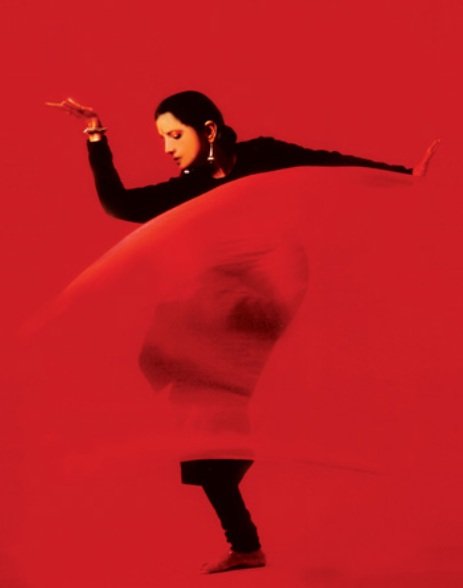 Lata Pada in 'Revealed by Fire' There was an earlier horrendous tragedy that many may have forgotten. 40 years ago. I was living and working in NYC during that decade and clearly remember receiving a phone call about the disaster. June 23,1985 and the tragic bomb blast of the Air India KANISHKA flight that exploded over Cork, Ireland. Dancer Lata Pada lost her entire family in that tragedy - her husband and two daughters. She rebuilt her life one breath at a time and created a most powerful stage work as a personal diary. REVEALED BY FIRE which began with the lines, "It was an ordinary day and the phone rang." I watched the show in Toronto. What a moment and a triumph of her human spirit. HERE WE GO AGAIN 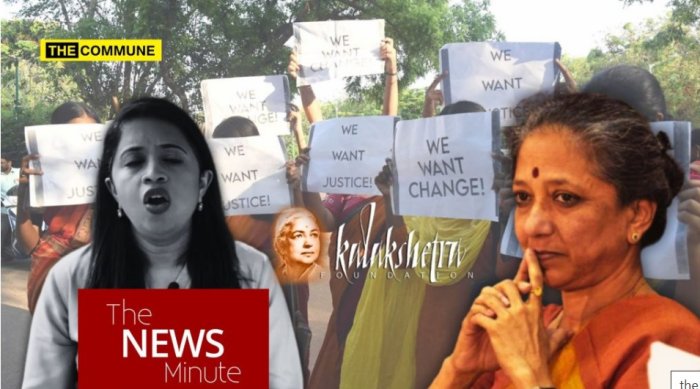 Kalakshetra and the student protests of 2023 resurfaced to the news. The Bharatanatyam circles erupted on Facebook and Instagram when senior Bharatanatyam artiste Leela Samson dropped a cryptic post in mid June. The paragraph she referred to was her earlier Facebook post of December 23, 2023 where she connected Athena, former student and presently a tutor in Kalakshetra, with a male faculty member. Leela concluded her post with the sentence, "I regret the error and no further comments will be made by me on her in the future". Before posting this short note, Leela had removed all her Facebook followers except for 4, perhaps hoping that the post would not be noticed. However, that short paragraph stirred up the entire Kalakshetra sexual harassment controversy all over again. The media had a field day for the next 6 days of the news cycle and then it all faded away. Dancers took to their social media pages with sarcastic posts and veiled mudslinging. Screenshots were shared, commented upon and soon forgotten. I have written repeatedly about the unequal power structures in the dance world. The hierarchical over reach of some seniors and gurus are well known. However, I would hope that the younger generation has become sensitised and that today's teachers are making them aware of "safe spaces" and the importance of creating clear boundaries in professional surroundings. In 2016, when #METOO movement gained momentum and global attention, victims, mostly women, were encouraged to tell their stories of trauma. Now it seems a general fatigue of Cancel Culture has taken hold and the world seems to have moved on. Conservative media and politicians have weaponised this "weariness" against the movement. The larger question is how we, the senior generation, are perceived with the Leela Samson incident. Already dancers, teachers and performers in their 60's, 70's and 80's are regarded with a mixture of trepidation, suspicion and discomfort. When someone who is as admired and venerated as Leela Samson falters, our entire generation takes a hit. We are all tarnished with the same brush as "toxic", "feudal" and "oppressive". Are we as a community taken seriously by professionals in other fields outside art? Answer - NO. Dancers are largely considered "decorative", "self-obsessed" and "narcissistic". We are not included in policy decisions or in activities aimed at the image building of a nation. We mean so little even if we represent one of the main creative centres of India's "soft power". Have we learned nothing from the past few years of shouting, name calling, chest beating and finger pointing? One side baying for the other's blood, demanding apologies and submission? Then terms like "foreign interference", "destabilising Indian culture" of a "toolkit operation" flooded the timelines of many SM handles. Anyone who stood by the side of the abused victims (like I did) was labelled a troublemaker. Social media can inflict severe damage with a careless comment or a slur. A young male dancer writes in graphic detail about abuse by a senior male artiste 8 years ago on his Instagram page and instantly there is a buzz and the volume of emotion swells. The news cycle lasts for about one week (if at all) and then the world swipes past and scrolls to another headline. Now what? Can personal handles on Facebook, Instagram and X act as judge, jury and executioner? Social media handles have given everybody a personal broadcast channel to hold forth, vent, blame, spout theories and opinions. India's legal system is clogged and backlogged and still unprepared to handle these kinds of cases. With Leela Samson becoming the object of anger and derision, will her career take a hit? Will invitations to chief guest, teach, choreograph and travel evaporate? Will audiences stop attending her concerts? Will students drop out of class? Will selfies and tags reduce? None of this will happen because memory is so short that events like these are now like reels - 3 seconds and then swipe. And does the government in New Delhi actually pay any attention to Tamilnadu, Chennai and Bharatanatyam? Does culture even matter to anyone in power? AND WHAT ABOUT THE VICTIMS? In all this hoopla and temporary media frenzy, are they being cast aside for someone's 15 minutes of fame? If the accusers fail to show up at a hearing to testify, cases are thrown out and the perpetrators walk free. The victims are left alone to carry the burden of the trauma. Building a community takes time and effort. It happens one person at a time, one follower at a time, one post, one talk, one class and one performance at a time. Many of us think that we are the "good people" in a bad system. Are we going to continue to practice the politics of politeness? The truth is that doing anything else but playing safe is dangerous and frankly, too much effort. Standing apart and speaking up means becoming a visible target for trolls and naysayers. I do not offer solutions or advice but will continue to write and speak for the personal safety of artistes who seek recognition and acknowledgment in their chosen field of dance and performance. All I can suggest to readers is to be a good listener if someone comes to you wanting to share a traumatic incident. That could be a first step to showing empathy. Listening. With my mind in a turmoil and preoccupied with many things, I decided to step out of the house to watch two performances - dance and theatre. MAGDALANA MARIAM   Anjana Anand (Photos: Konica Studios, Chennai) I was able to attend a very interesting premiere of MAGDALANA MARIAM inspired by the legend of Mary Magdalene, among the most prominent disciples of Jesus Christ. As a witness to His crucifixion and resurrection, Mary Magdalene was canonised as a saint in 2016. Her story has fascinated many writers and feminist historians with a film on her life being made in 2018. Bharatanatyam dancer Anjana Anand interpreted the lyrics of revered Malayalam writer Mahakavi Vallathol's classic MAGDALANA MARIAM. With a simple set and a small set of steps as stage props, Anjana brought her delicate and lyrical presence to the character of the enigmatic figure, whose important presence has confused and angered many religious leaders from within the Church. The hit Hollywood film THE DA VINCI CODE even portrayed her as the wife of Jesus. The Last Supper painting by artist Leonardo Da Vinci, now hanging in Milan's Basilica Santa Maria, places her to the right of Jesus Christ. Anjana's beautiful dancing shone throughout the 85 minute evening. The filigree quality of her presence and choreography was perfectly suited for the multiple layers of Mariam/Mary's transformation from a misguided woman to a spiritually heightened apostle. The scene of the masks and banishing of many temptations was beautifully danced. The entry of Jesus on the steps was dramatic, as was his resurrection (via lights) from the tomb. The music was evocative but the transition between the sacred sounds of the church to Carnatic inspired notes could have been smoother. Lighting could have been more dramatic and the depth of the Bharatiya Vidya Bhavan stage could have been utilised to greater effect. The Malayalam lyrics reimagined Mariam's presence like a moon, the stars and the glow of the firmament - adding to the legend of her beauty and allure. I clearly remember watching Sonal Mansingh in Sapru House, New Delhi, almost 45 years ago performing the same character. The scene of her washing Christ's feet with her long hair is still etched in my mind. An all white costume and Sonal's dramatic persona created a seminal moment in modern classical Indian dance. SHOORPANAKHA: A SEARCH 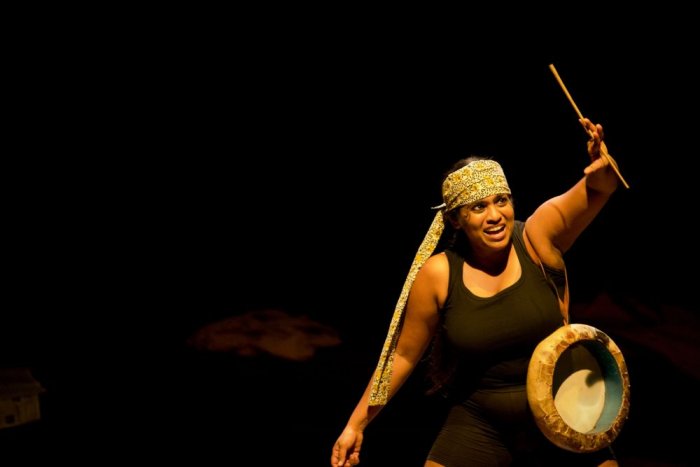 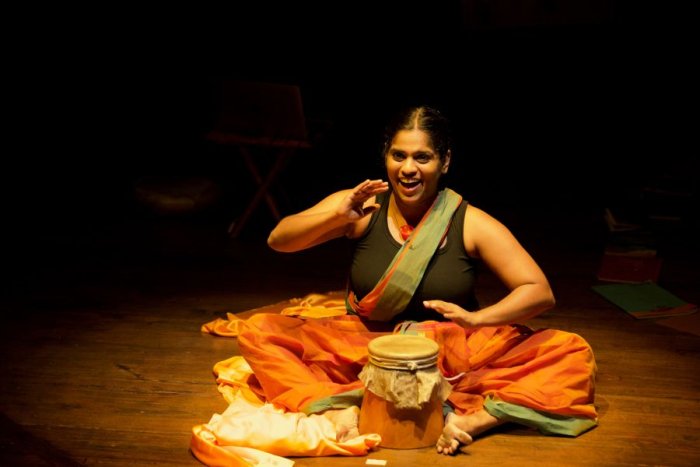 Parshathy J Nath Generously funded by India Foundation for the Arts and Sony Pictures Entertainment, actor Parshathy J Nath delivered her complex and energetic one woman play on the character of Surpanakha (I am using the conventional spelling here), the sister of Emperor Ravana of Lanka. She is an important trigger in the Ramayana as her entry pushes the story towards its dark and dangerous climax. Parshathy displayed all the training from her various genres - Kattaikoothu, Adishakti's physical theatre training, Koodiyattam, percussive playing on the Mizhavu and Parai with multi-lingual dialogue. While the title seemed to pre-empt any curiosity or questioning - the work itself revealed nothing new about the enigmatic princess of Lanka. A deliberately messy stage littered with books, a laptop, various pieces of cloth and a bench comprised the set. It looked like an adolescent's messy bedroom throwing a hissy fit! The prologue was casual and perhaps planned to invite us into the narrative. Parshathy vacillated between compelling physicality and awkward stillness. There were some interesting moments with the large Mizhavu representing Rama and the smaller one for Lakshmana. The larger instrument emanating a different resonance and the smaller one sounding flat and monotonous. But they were too few moments for us to hold on to, mostly lost between Parshathy's structure within the performance of talking to her director in the balcony as embedded in the script. As she reads out one of the observations about the play, "Less character and more actor". There were so many styles revealed that it felt like a cut and paste and in her own words, "an appropriation". We did not see or learn anything new about Surpanakha. We only saw Parshathy in a mostly self-indulgent and exuberant display of physicality trying to pull everything from her arsenal but leaving us dissatisfied. Perhaps the title is self-explanatory. The search has to continue. Reclaiming myths and legends for new interpretations is like a translation AND a trans-creation. How do actors and dancers resurrect these familiar but mostly silhouette characters into people we can befriend anew. Mariam and Surpanakha. Fallen woman and frightening demon. How does one wrest these women from patriarchal structures and re-energise them for today? One stark contrast was the kind of crowd that attended the shows. The dance crowd at the Bhavan foyer were quiet, conservatively dressed, bending down to touch the feet of elder gurus and soft spoken. The theatre crowd in the foyer of MEDAI was mostly in their 30's - eclectic, talking politics and engaged in animated discussions. I find the latter community more interesting to be in the midst of. While the classical dance world is celebrated and displayed by the government and embassies as examples of India's "soft power", the theatre world is relatively ignored and isolated by governments. However, the democratic nature of theatre, the feeling of appearing on stage without the jewellery and accoutrements of classical dance is a huge barrier broken. There are no veils that mask and inhibit access to the art and the artiste. As one Rasika said, "Classical dance and dancers are trapped in the aura of politeness and gentility. How do we break free from the on-stage appearance and convey who we are as human beings?" There are many aspects of classical/neo classical/contemporary dance that theatre practitioners can learn from. And vice versa. I wish there was more cross pollination between both genres in India. And more leaning into each other's process and practice. The idea of NATYA is so unique to the Indian performing arts context that we can strengthen one another in this interaction while building a true community of unique creators. BEAUTIFULLY DIFFERENT 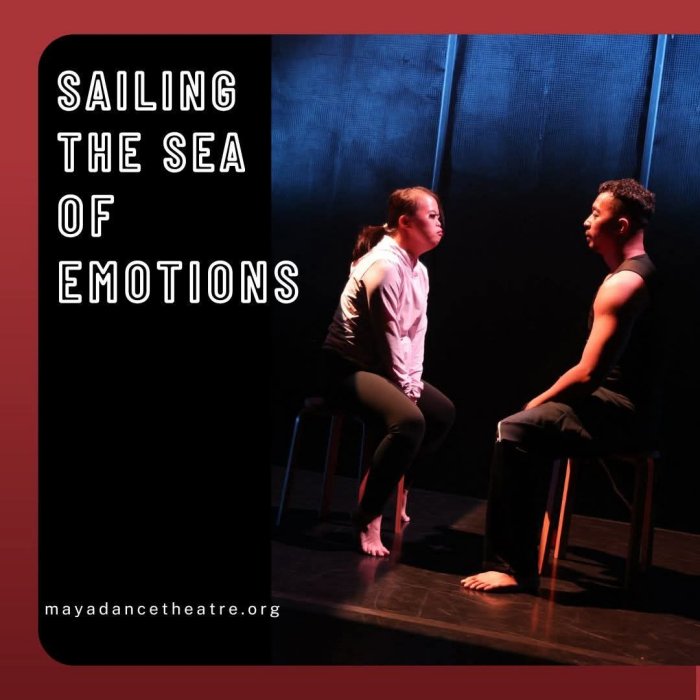 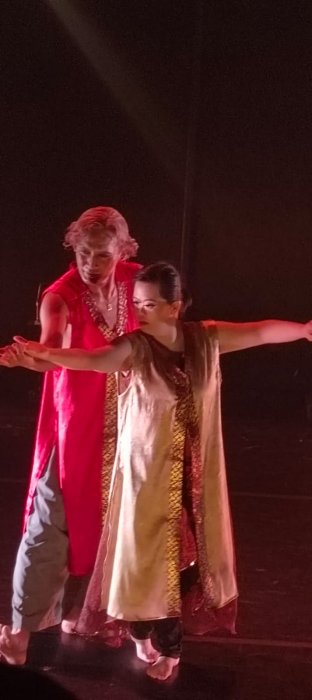 During a brief stopover in Singapore, I had the opportunity to meet and interact with dancer and choreographer Kavitha Krishnan who updated me on all the exciting news about her work with specially abled students. Kavitha was trained by Neila Sathyalingam, a Kalakshetra alumni and one of my most dear and important gurus during my time there. Kavitha has formed DADC (Differently Abled Dance Company) which is Singapore's first dance ensemble that is celebrating students with special abilities in the framework of professional presentations. Alongside the "creative enablers" from her MAYA DANCE THEATRE, Kavitha has created BHOOMI - a collaborative dance presentation that premiered in Singapore and has also been seen in Jakarta. She shared the teaching approaches to these students and how it has been a humbling and rewarding experience for her. When mainstream festivals in Asia are now actively looking for differently abled artistes in a professional full evening presentation, Kavitha's long and arduous journey is poised to get further acclaim and applause! In closing, I would like to take a moment to focus on the current addiction to the digital media and its uncanny affiliation with the Seven Deadly Sins - Pride, Greed, Wrath, Envy, Lust, Gluttony and Sloth. All these are fulfilled by the incessant scrolling, deleting, posting, trolling, sharing, following, unfollowing, blocking, reporting, hacking, purchasing, selling and commenting. Now, if only we can try to accommodate these positive seven qualities in our digital lives. Grace, Wisdom, Understanding, Counsel, Knowledge, Empathy, Fortitude and Faith! In the midst of all the large scale and intimate tragedies that we face, amidst all the personal struggles and challenges we encounter which we don't post on Facebook and other platforms, what has kept me buoyed is the feeling of Gratitude. My dear friend, award winning First Nation poet Joy Harjo expressed this so beautifully on her Facebook page. "Every struggle and clash is a learning and an illumination that will outlast the suffering. I turn to a poem, a phone call to a dear old friend, a memory or a touch - even a dream. It is a feeling of soft rain in the dawn and a feeling that someone is praying for you (or you for someone else). We WILL make it through, even what feels utterly unbearable, even when it appears that we don't have a chance." My sombre mood has been somewhat alleviated by a visit to the islands of Indonesia. Bali and Yogyakarta have soothed my soul and reminded me of the grace of our lives. The small remembrances of daily offerings of gratitude, even in the most swanky of bistros and stores, of Ganesha and Indra gazing down at holiday diners and the sheer spectacle of the dances - Kechak, Lelong and epic trans creations of the Ramayana and the Mahabharata - have renewed my faith in the power of the arts and its ability to heal, if not the bruised of the world, at least - ours. Until next time! Dr Anita R Ratnam anitaratnam.com Connect with us on Instagram and Facebook Post your comments |